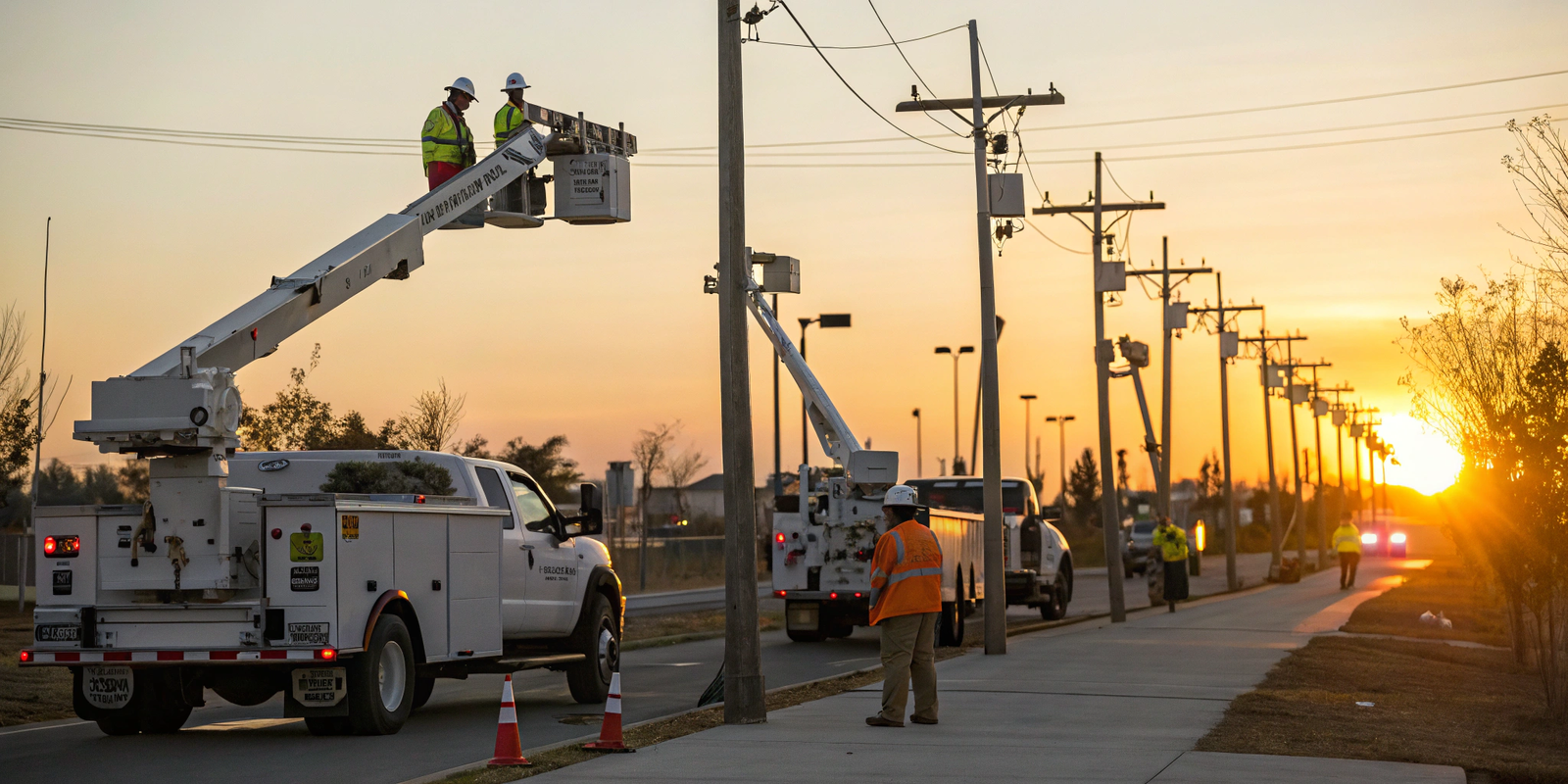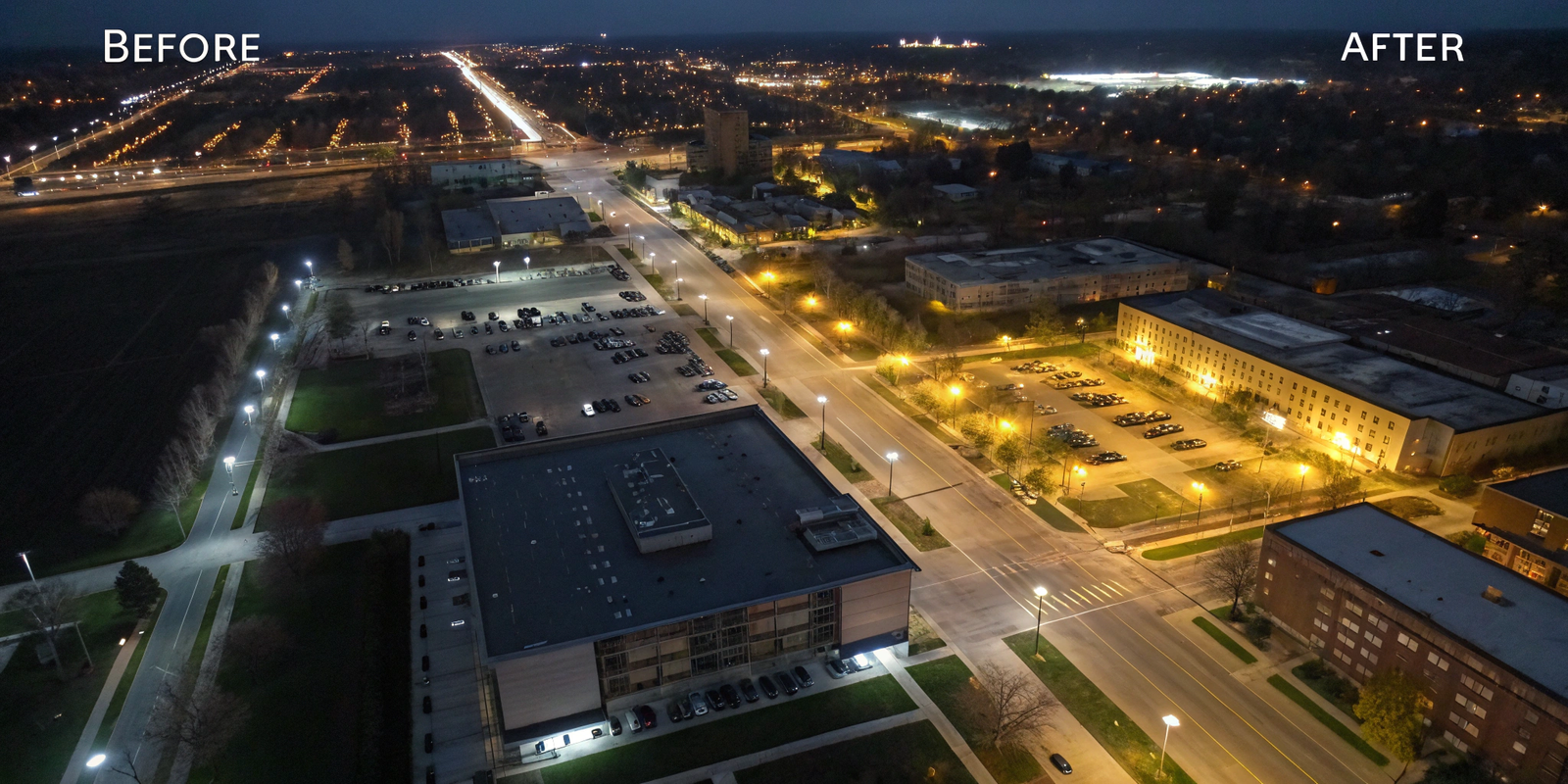As municipalities work to improve infrastructure with limited budgets, energy-efficient street lighting has become a key solution. LED upgrades reduce costs, enhance safety, and support sustainability goals. This article explores the importance of energy-efficient street lighting, its financial and environmental benefits, and key considerations for municipalities before making the switch.
Why Should Municipalities Consider Energy-Efficient Street Lighting?
1.1 Enhanced Public Safety
Reliable, high-quality illumination improves visibility, making streets safer for pedestrians and drivers.
- Instant-on technology: LEDs turn on immediately, unlike fluorescent lights that require warm-up time.
- Better visibility: Short-wavelength LED lighting enhances clarity, helping law enforcement identify details more accurately (U.S. Department of Energy).
- Reduced crime rates: Well-lit streets deter criminal activity, contributing to overall public safety.
1.2 Significant Cost Savings
Switching to LED street lights provides substantial financial benefits by cutting energy and maintenance expenses.
- Energy savings: A single township reduced annual energy costs by $135,000 after switching to LED street lights.
- Lower maintenance costs: With a 15+ year lifespan, LEDs reduce the need for frequent replacements, saving an additional $95,000 per year.
- Reduced labor costs: Fewer replacements mean municipalities spend less on maintenance crews and equipment.
1.3 Environmental Benefits
LED street lighting significantly reduces carbon emissions and supports sustainability efforts.
- Lower emissions: One township cut 506 metric tons of carbon emissions annually, equivalent to removing over 100 cars from the roads.
- Reduced energy consumption: Replacing high-pressure sodium lights with LED reduces electricity demand, lowering reliance on fossil fuels.
- Sustainability goals: Many cities aim to decrease their carbon footprint, and LED upgrades align with these objectives.
Key Questions Municipalities Should Ask Before Upgrading to LED Lighting

Before transitioning to LED street lighting, municipalities must assess ownership, procurement policies, and financing options.
2.1 Who Owns the Streetlights?
Ownership determines the flexibility municipalities have in choosing an LED solution.
- Municipally-owned streetlights: Cities can upgrade to LED independently, selecting preferred suppliers and financing options.
- Utility-owned streetlights: The utility company controls upgrades, meaning municipalities may have limited choices.
- Assessment: Cities should identify which lights they own before estimating upgrade costs.
2.2 What Are the Procurement Requirements?
Understanding procurement regulations helps municipalities streamline the LED transition.
- Competitive bid process: Many local governments must follow strict bidding procedures.
- Pre-approved vendors: Some municipalities require purchases from government-approved suppliers.
- Planning: Early engagement with procurement officials prevents delays in project approval.
2.3 How Can Municipalities Fund LED Upgrades Without Upfront Costs?
Many municipalities struggle with budget constraints, making alternative financing solutions essential.
Funding options for LED upgrades:
| Financing Option | Benefits |
|---|---|
| Efficiency Made Easy (EME) Program | No upfront capital required; costs included in monthly energy bills; payment deferral up to 24 months |
| Energy savings performance contracts (ESPCs) | Bundled efficiency projects covering LED lighting, HVAC upgrades, and water conservation |
| Multi-year energy contracts | Distributes upgrade costs over multiple years to align with budget planning |
Why Investing in LED Street Lighting Makes Sense for Cities

3.1 Immediate & Long-Term Financial Benefits
Investing in LED street lighting provides both short-term and long-term financial advantages.
- Lower energy bills: LED street lights use up to 60% less energy than traditional lighting.
- Minimal maintenance costs: Long lifespan reduces replacement frequency and labor costs.
- Predictable budgeting: Energy-efficient lighting helps municipalities manage energy expenses more effectively.
3.2 Environmental & Sustainability Goals
LED lighting aligns with municipal and state sustainability initiatives.
- Carbon reduction: Cities can cut emissions significantly by replacing outdated street lighting.
- Reduced fossil fuel dependence: Lower energy consumption decreases reliance on non-renewable resources.
- Long-term sustainability planning: LED street lighting supports cities’ green energy commitments.
3.3 Funding Flexibility
Municipalities can implement energy efficiency projects without exceeding budget constraints.
- Deferred payments: Many financing programs allow up to 24 months before payments begin.
- Integration with infrastructure plans: LED upgrades can be incorporated into broader public works projects.
Conclusion
LED street lighting is a cost-effective and impactful solution for municipalities seeking to reduce expenses and enhance public safety.
Key takeaways:
- Energy savings and lower maintenance costs make LED upgrades financially beneficial.
- Environmental benefits align with sustainability goals by reducing carbon emissions.
- Flexible financing options enable municipalities to transition to LED lighting without upfront capital.
By assessing ownership, procurement policies, and funding solutions, cities can implement LED street lighting projects efficiently, ensuring long-term economic and environmental advantages.







